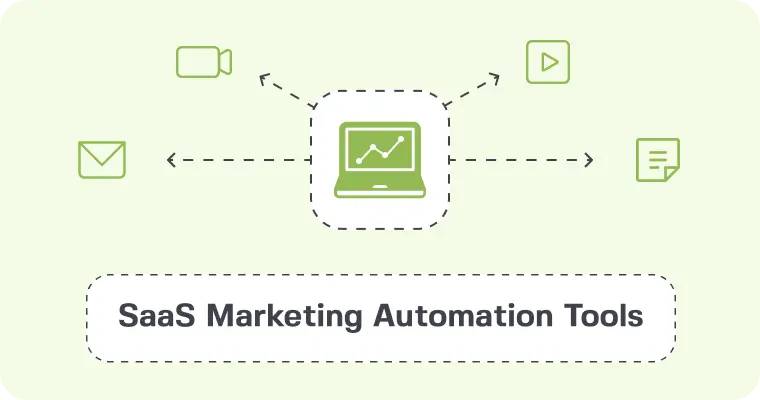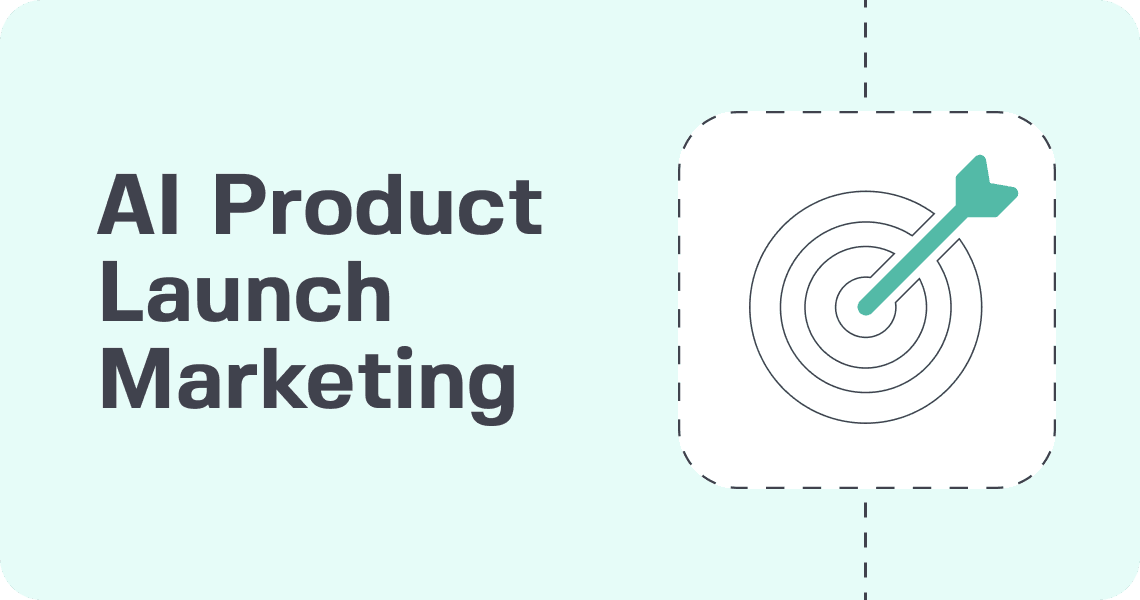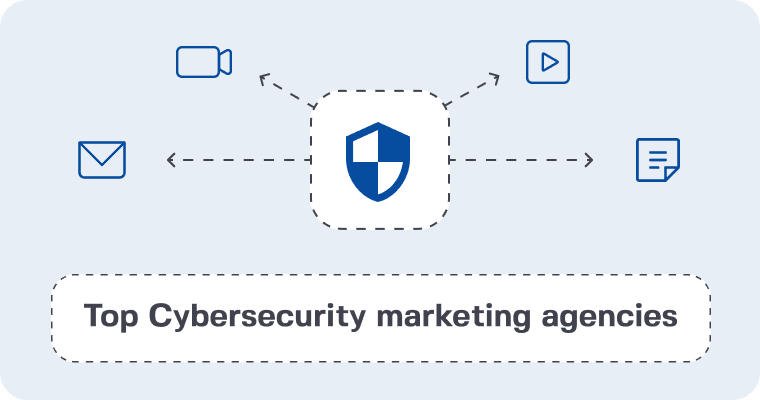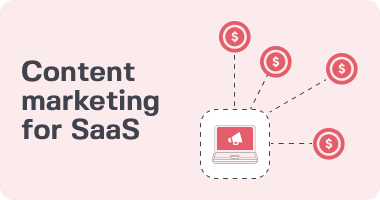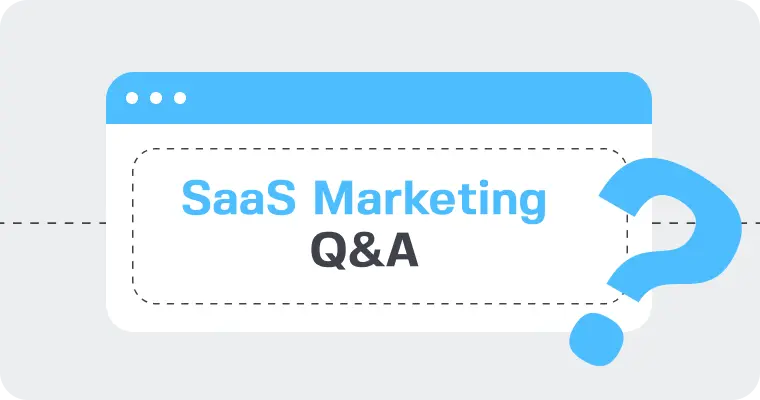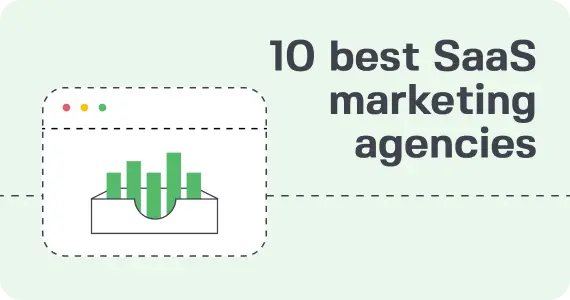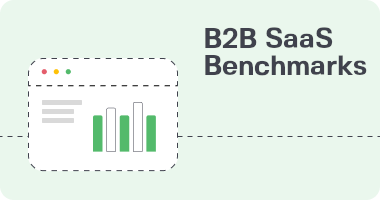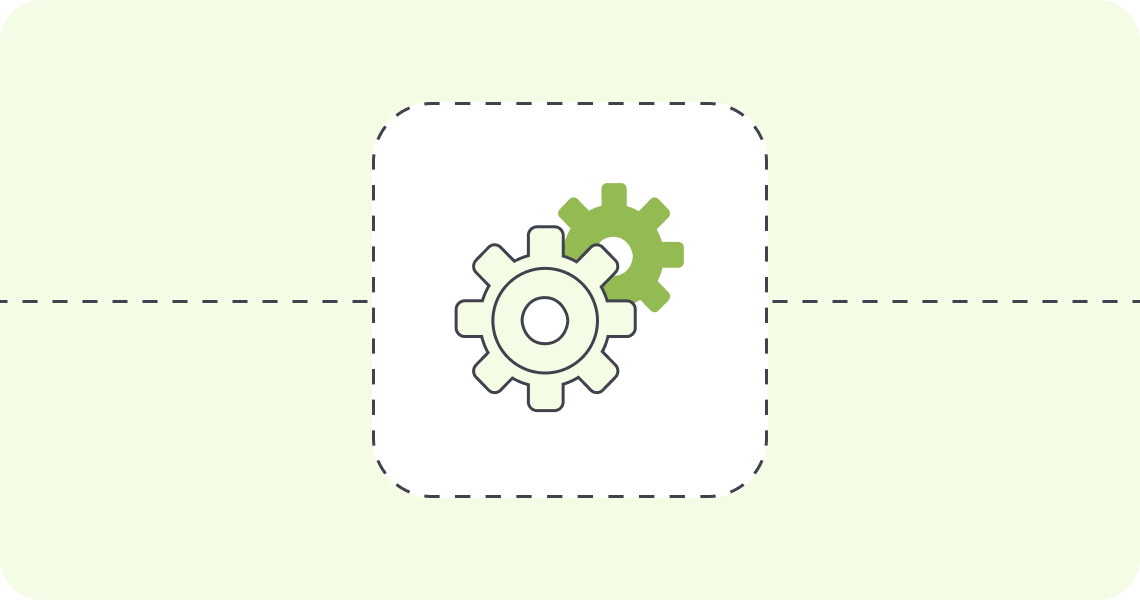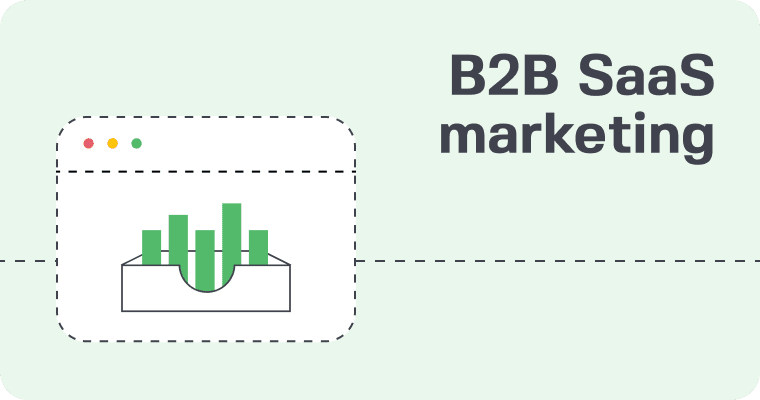According to the Business Research Insights, the B2B marketing spending is projected to grow at a CAGR of 6.70%, reaching approximately USD 37.35 billion by 2033. Planning your marketing budget for 2026 requires balancing efficiency, ROI, and strategic growth goals. When planning a B2B SaaS marketing budget, it’s crucial to consider the competitive landscape and your company size, as both factors significantly influence budget allocation and strategic decisions. Below is a comprehensive guide tailored to B2B SaaS companies — focusing on metrics, cost control, and revenue alignment.
1. Start Planning B2B SaaS Marketing Budget with Business Objectives
Your marketing budget should directly support business-level goals, such as:
- Revenue growth targets (e.g., 30% YoY growth)
- Market expansion (e.g., entering new verticals or geos)
- Product launches or repositioning
- Customer acquisition vs. retention priorities
A comprehensive marketing plan helps ensure that budget allocation is aligned with these objectives, guiding strategic efforts and resource distribution.
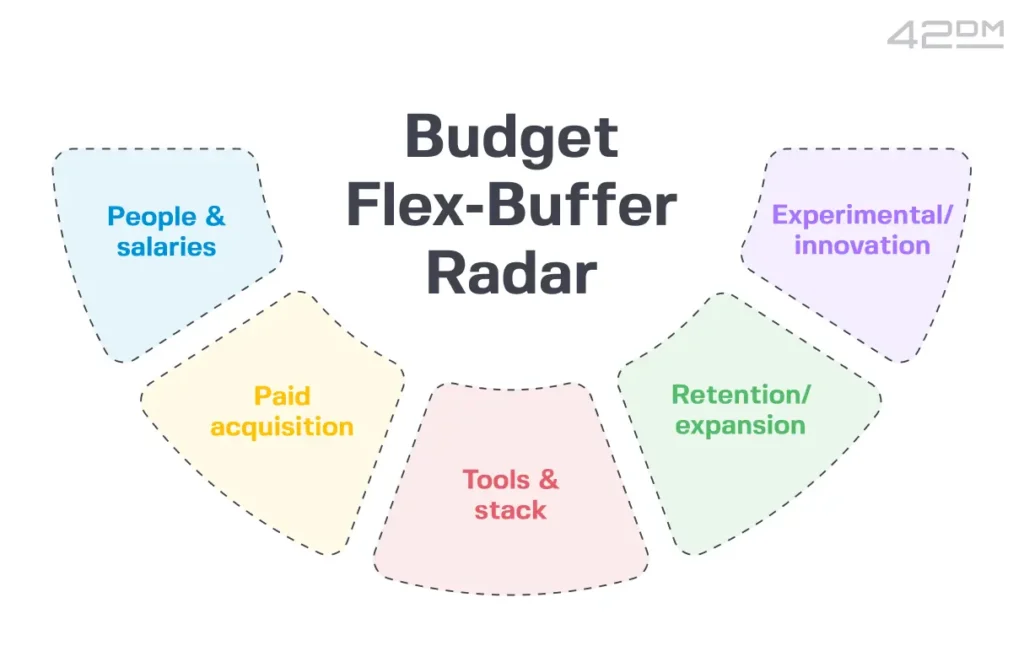
Understanding your target market and conducting thorough market research are essential for setting realistic revenue growth targets and market expansion plans. Identifying your target audience is especially important, as it enables more effective SaaS marketing budget planning by focusing resources on the most relevant customer segments.
These objectives define how aggressive or conservative the budget should be. A well-defined B2B SaaS marketing strategy and access to growth capital can influence how aggressive your marketing budget should be to drive growth.
2. Use the Right SaaS Marketing Budgeting Model
There are three common SaaS marketing budgeting models:
| Model | Description | Best For |
|---|---|---|
| % of Revenue | 10–20% of ARR (annual recurring revenue), annual revenue, or total revenue. This model is often based on annual recurring revenue (ARR) or annual revenue, and total revenue is also used for benchmarking. | Stable growth SaaS |
| CAC-Based | Based on target CAC per segment and revenue goals | Performance-driven companies |
| Zero-Based | Every expense must be justified from scratch | Early stage or tight control scenarios |
SaaS businesses and SaaS firms often use industry benchmarks and B2B SaaS benchmarks to guide their SaaS marketing budgets, ensuring their spend aligns with sector standards and growth objectives.
For equity-backed companies and bootstrapped companies, a SaaS company or SaaS firms may set their SaaS budget as a percentage of total revenue or annual recurring revenue, depending on their growth stage, funding, and strategic goals.
Typical SaaS marketing budget:
- Early-stage: 20–40% of revenue
- Growth stage: 10–20%
- Mature: 5–10%
- SaaS companies spend a significant portion of their revenue allocated to marketing, with industry benchmarks for SaaS marketing spend often based on a revenue percentage of the total marketing budget.
After the table, it’s important to note that equity-backed companies and bootstrapped companies approach marketing budgets differently. Equity-backed companies spend a higher revenue percentage—typically 10–15% of their total marketing budget—on marketing activities, leveraging external funding to drive growth. In contrast, lower-growth bootstrapped companies may allocate a larger share of their revenue to marketing to compensate for slower growth and limited funding sources. Bootstrapped companies generally have more conservative budgets, while equity-backed companies can invest more aggressively in SaaS marketing spend and SEO.
3. Break Down Spend by Funnel Stage
Allocate budget by funnel priority based on where you’re leaking revenue or need acceleration:
| Funnel Stage | Channels | Budget Allocation (avg) |
|---|---|---|
| TOFU (Awareness) | Paid social, SEO, content, PR | 30–40% |
| MOFU (Consideration) | Webinars, remarketing, email | 30–40% |
| BOFU (Conversion) | ABM, sales enablement, demos | 20–30% |
| Retention/Expansion | Customer marketing, CS ops | 5–10% |
At the top of the funnel, lead generation activities are critical for attracting new prospects, with paid ads serving as a key marketing channel to drive awareness and fill the pipeline.
Focusing on a few core channels with proven ROI, such as SEO, content marketing, and webinars, can help maximize budget efficiency. When prioritizing, evaluate each marketing channel for its effectiveness at different SaaS marketing funnel stages.
At different funnel stages, outbound marketing (e.g., cold outreach, advertising) is often used for awareness, while inbound marketing (e.g., targeted content, SEO) is key for consideration and conversion.
For retention and expansion, investing in customer success initiatives and ongoing engagement with existing customers, such as loyalty programs and upsell campaigns, can maximize ROI and drive long-term growth.
Demand generation and specific marketing programs should be prioritized based on where the funnel needs acceleration.
4. Use Unit Economics and Customer Acquisition Cost to Drive Decisions
Tie marketing investments to:
- Customer Acquisition Cost (CAC): = (Customer acquisition costs + Marketing costs) / # of new customers
- CAC Payback Period: = CAC / Gross margin per customer per month
- LTV:CAC ratio: Aim for 3:1 or better. The LTV:CAC ratio compares the customer lifetime value (LTV) to the cost of acquiring a customer. Customer lifetime refers to the total period a customer remains active, while customer lifetime value measures the total revenue a business expects from a customer over that period. Understanding lifetime value is essential for optimizing marketing budgets, measuring customer profitability, and ensuring sustainable growth.
Average revenue per user (ARPU) and monthly recurring revenue (MRR) are important SaaS marketing metrics for evaluating the effectiveness of your spend, as they help assess revenue-based budgeting and forecast growth.
Example: If LTV = $18K and CAC = $6K, then LTV:CAC = 3 (acceptable). If CAC Payback is>18 months, tighten spending or optimize channels.
5. B2B SaaS Marketing Channels: Mix & Prioritization
Typical B2B SaaS marketing channels (with budget priority range):
| Channel | % of budget (guideline) |
|---|---|
| Paid media (Google, LinkedIn) | 25–35%< br>Tip: Use Google Ads and its Performance Planner for forecasting, assessing campaign performance, and managing paid media budgets efficiently. Paid advertising is a key investment area for SaaS companies, requiring strategic planning and sufficient budget allocation to drive lead generation and growth. |
| SEO & content marketing | 15–25%<br>Search engine optimization is crucial for lead generation and improving organic visibility, making it a high-ROI channel for SaaS companies alongside content marketing. |
| Events (virtual/in-person) | 10–20% |
| Marketing automation/CRM tools | 5–10% |
| ABM & intent data platforms | 5–15% |
| Brand development | 5–10% |
Use historical ROI and incrementality testing to adjust.
Investing in marketing operations is essential to ensure efficient campaign execution, proper data management, and data-driven decision making.
Content creation is a key driver for inbound leads, supporting both SEO and content marketing efforts to boost visibility and authority.
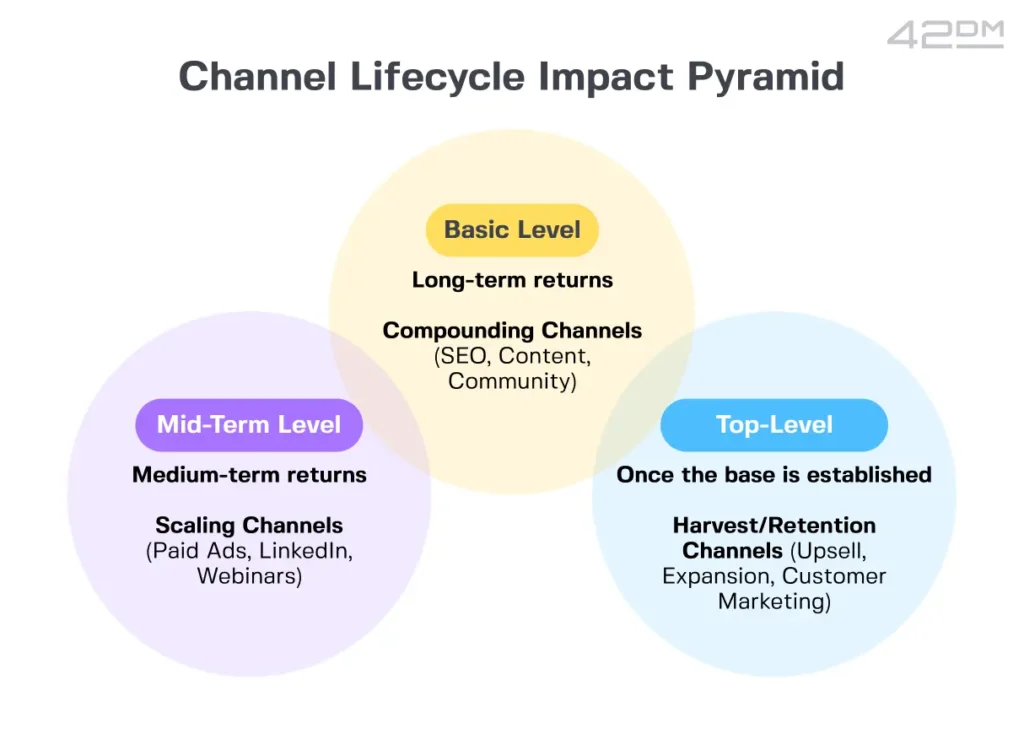
Fast-growing SaaS companies leverage inbound marketing and paid advertising to fuel rapid growth, often allocating significant portions of their budgets to these channels, especially in the early stages or when pursuing aggressive market capture.
Product-led growth strategies can also influence which channels are prioritized and how budgets are allocated, as they often integrate product management, engineering, and marketing to drive scalable user engagement and growth.
Large, established software companies like Salesforce invest heavily in marketing, integrating these efforts with their overall product and growth strategies to maintain market leadership.
6. Marketing Headcount & Tools
Include:
- Team salaries (content, performance, ops, design)
- Contractors/agencies (SEO, ads, creative)
- Martech stack (e.g. HubSpot, Marketo, Clearbit, 6sense)
SaaS companies often allocate 30–50% of the marketing budget to people & tools.
Marketing spending on headcount and tools is a critical marketing investment that drives growth and operational efficiency. Marketing budgets should account for both fixed and variable costs in these areas to ensure effective resource allocation and adaptability as company needs evolve.
7. Forecasting & Phased Spending
Plan spend by quarter, aligned with:
- Seasonality (e.g. high intent Q1-Q2, slow Q4)
- Product launch schedules
- Hiring ramp for sales team
A well-planned initial investment in marketing is crucial in the early phases, as it can set the stage for future growth and help establish a strong presence in a competitive market.
Start with a baseline budget, then build in flexible allocation (e.g., 10–15% of budget reserved for ad-hoc growth opportunities or tests). It’s also important to set aside a portion of the annual marketing budget specifically for unexpected expenses and to test new marketing channels.
Phased spending and flexible budgeting not only help manage risk but also support sustainable growth by balancing immediate results with long-term brand building and customer trust.
8. Track KPIs Monthly & Reforecast
Key marketing metrics for CFO visibility:
- MQLs / SQLs / Pipeline generated per $ spent
- CAC vs. target
- CAC Payback and LTV:CAC
- ABM Attribution accuracy (first-touch, multi-touch)
- ROI per channel/campaign
Most companies review these KPIs monthly or quarterly to ensure their marketing budgets are aligned with business goals. Successful companies consistently track and optimize their marketing spend to increase market share and outperform competitors.
Review monthly or quarterly and reallocate underperforming spend early.
SaaS Marketing Budget Checklist
- Align with revenue targets and GTM priorities
- Choose a budgeting model (Revenue %, CAC-based, or zero-based)
- Allocate by funnel stage and buyer journey
- Track ROI and CAC metrics obsessively
- Include headcount, tools, and agency costs
- Plan for flexibility and reforecast quarterly
Specializing in complex, high-ticket SaaS offerings, we provide a full-stack team that covers strategy, SEO, paid media, content, ABM, and marketing automation strategy —delivering pipeline impact, not just traffic. Here at 42DM B2B SaaS marketing agency, we bring the strategic insight and execution muscle to drive real growth. Aiming for efficient, ROI-focused marketing, we offer the agility, tech fluency, and results orientation that modern B2B growth demands.


